
17 minute read
FEATURE
from c-2021-02-21
DEATH BY HOMELESSNESS
‘Constant, toxic stress’ of living unsheltered takes ultimate toll
by Ken Smith kens@newsreview.com
Robin Engel holds a sign honoring Felipe Ramirez Jr. while protesting the eviction of homeless campers at The Triangle.
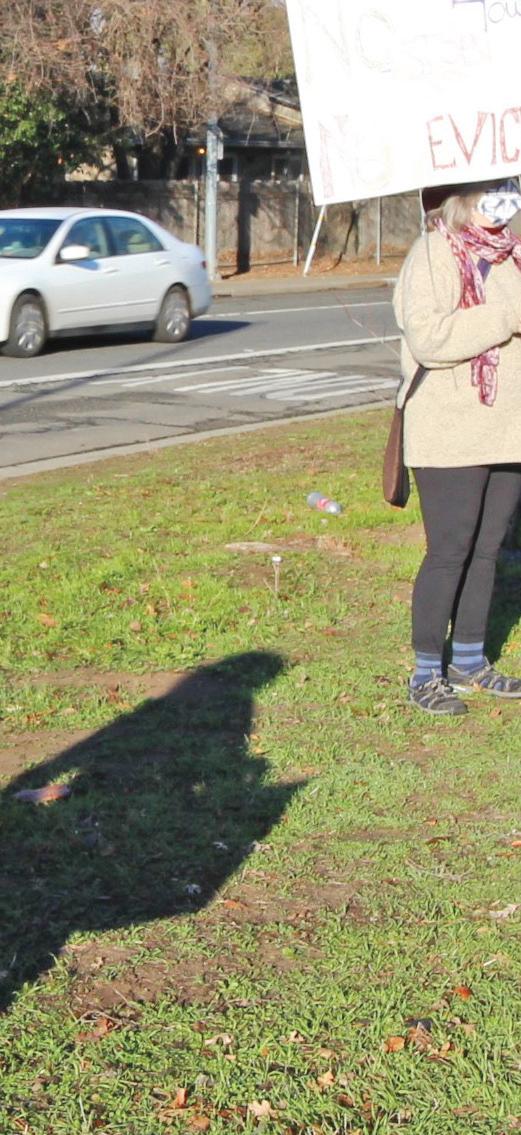

PHOTO COURTESY BY KEN SMITH
In recent weeks, a wedge-shaped traffic median between Pine and Cypress Streets—known as The Triangle—became the latest battleground in the community-dividing conflict over how Chico should address homelessness issues. On Feb. 4, city workers and police officers razed the homeless encampment that stood there since last spring. They did so at the behest of the City Council, evicting campers despite ongoing protests and threatened legal actions over encampment sweeps that critics say are immoral and illegal, and the fact that no shelter space is available. At the end of the day, an empty plot of land surrounded by police tape was all that remained of the camp where several dozen unhoused people had found some respite and stability during the COVID-19 crisis.
Just three blocks away from The Triangle, outside the Chico Friends Meeting’s Fellowship Hall on 16th Street, stands a somber reminder of the real consequences at stake in this war on homelessness: a memorial to those who ultimately lost their battle for survival on the streets of Chico. The temporary
The Ericksons—clockwise from left: Emilia, Chad, Ronin, Logan, Scarlett, Colin and Stump the dog—stand before Logan, Scarlett, Colin and Stump the dog—stand before monument features a picture of Eric Oyler surtheir partially built home in Concow. PHOTO BY ASHIAH SCHARAGA their partially built home in Concow. rounded by ribbons left by visitors. Oyler’s lifeless body was found on Dec. 13 on the front landing of the church where the Chico Friends—also known as Quakers—meet. He was 54 years old.
“A man died outside my home yesterday,” a neighbor named Heather Bonea wrote in an emotionfilled post to Facebook the following day. “Less than 50 feet from my door, he lay down in the night under the eaves of a church with nothing more than some heavy boots and a blanket. He never woke up. He died in the early hours of the morning and lay there until the afternoon before anyone noticed. ‘We think his name was Eric,’ a church member told us.
“It is so sad,” the post continues. “It is 1,000 kinds of wrong. But, dammit, I could have brought him an effing sleeping bag. There is nothing right about letting someone die alone on the cold concrete. At some point, we have to come to terms with the atrocities we commit, whether they be through ignorance, negligence, avoidance, or violence.”
Oyler’s death is not an anomaly. The CN&R reported on three people who died on the streets over the course of eight days during a brutal cold snap six years ago (see “The Final Kindness,” Feature story, Dec. 17, 2015), and many more of our unhoused neighbors have died each year since. According to Chico Police Department press releases and information provided by homeless advocate Siana Sonoquie and the Butte County Coroner, at least 18 members of Chico’s homeless population have died in the past eight months.
As no local agency keeps an official count of deaths among the homeless population, it is impossible to do a full accounting or compare statistics to housed individuals. The actual numbers of Chico homeless deaths is likely higher, and recent Point in Time homeless census counts conducted by the Butte County Homeless Continuum of Care do not reflect accurate numbers. The last complete census, in 2019, counted 2,304 homeless individuals in all of Butte County and was likely inflated by the thenrecent Camp Fire; the 2020 PIT only included individuals in shelters, and counted 152.
According to the National Coalition for the Homeless, “People who experience homelessness have an average life expectancy of around 50 years of age, almost 20 years lower than housed populations. The Center for Disease Control (CDC) states that people experiencing homelessness are at a greater risk of infectious and chronic illness, poor mental health, and substance abuse.” Numerous news reports from areas where better statistics are kept have indicated significant increases in homeless deaths in recent years, particularly in 2020.
Not all 18 deaths occurred on the streets. At least seven perished in public spaces, while others died in the hospital or in temporary/ transitional housing. Sonoquie, who helps run Project Roomkey through her affiliation with Safe Space Winter Shelter, said at least seven guests of that program have passed away since it began sheltering elderly unhoused people with serious medical conditions in Chico motel rooms.
The official causes of death of those 18 souls include many who died from illnesses undoubtedly complicated from time spent on the streets; a handful of fatal overdoses; and a police shooting (Steven Vest, 30, who was homeless since the Camp Fire). One death—of James Wedge, 46—was ruled a suicide by authorities, but some members of the homeless community and those who work with them believe he may have been murdered.
Regardless of what’s written on death certificates, homeless advocates believe that the challenges of living unhoused were a major factor in each case.
“When people don’t have a place to live that’s safe, it’s just constant, toxic stress,” Sonoquie said. “Many things are exacerbated [by living on the streets] and happen because of that. People like you and I can smooth over things because we can go home, refuel, grieve, use the bathroom. … It all just compounds when you’re homeless.
“With all the people that have died, it’s so alarming how much it happens and how sick people truly are … like how physically ill someone can be and still be on the streets. It alarms me what people can go through and persist on the streets alive.”

PHOTO COURTESY OF SIANA SONOQUIE
A memorial to Eric Oyler stands at the Chico Friends Meeting’s property, where he died on the church’s front porch.
PHOTO BY KEN SMITH



DROPPING THEIR DEFENSES
Curtis Aguirre, or “Bear” as he was known to friends, was a Native American man who hailed from Glenn County’s Grindstone Indian Rancheria of Wintun-Wailaki Indians. According to Sonoquie, he spent a significant amount of time in prison before landing on the streets of Chico several years ago. She described him as a soft-spoken music lover whom younger natives on the street—such as Oyler, who was Aguirre’s good friend—looked up to.
Aguirre was also well known to staff and volunteers at the Safe Space Winter Shelter. The seasonal, low-barrier shelter usually operates at rotating churches during the winter months, but was unable to open earlier this season as the city insisted hosting facilities be equipped with sprinklers (a requirement it later backed away from in the ongoing struggle to establish shelter).
Safe Space staff instead focused their efforts on Project Roomkey, a statewide program aimed at slowing the spread of COVID-19 by placing unhoused individuals in motel rooms, for which the organization oversees shelter operations. In order to qualify for Project Roomkey, people must be over the age of 65 and have serious medical issues. The program has provided shelter for hundreds in the past several months, many of whom have successfully transitioned into more permanent housing.
Just this week (Feb. 7), Safe Space opened a temporary nightly shelter called Casey’s Place (in honor of longtime Safe Space staffer and board member Casey Doran, who died of cancer in December). It is limited compared to previous years, open only to referrals who meet Project Roomkey criteria and with space for 20 to 30 guests—as opposed to up to 60 in past years— due to social distancing precautions.
Sonoquie explained Aguirre suffered from Stage 4 colon cancer and was approved for hospice before Project Roomkey began, but couldn’t receive those services because he was homeless. She said his condition worsened after he entered the program, and he still could not receive hospice care at the motel. For that reason, Safe Space staff helped secure him a studio apartment and maintained a regular
vigil with the dying man.
On May 4, Safe Space Project Manager Marin Hambley, who coleads the local Roomkey program with Sonoquie, was on “Bear duty.” Sonoquie stopped by to deliver Hambley provisions.
“Bear hadn’t been lucid for days, and he died that night as Marin and I sat with him,” Sonoquie said. “We felt him go from warm to cold.
“His biggest request was that he have a radio in the apartment,” she continued. “I remember the song ‘Our House’ was playing when he passed. We’d already called his daughter and she was on her way, so we cracked a beer, said goodbye to Bear and waited for her to arrive.”
Though Sonoquie has known many unhoused people who’ve died in her years of working with them, she said it was the first death she’d witnessed firsthand. It was also the first of the seven Roomkey deaths, all of which resulted from illness and infection.
Of that significant number of deaths, Sonoquie noted that all of the guests are elderly and ill. However, she and other Roomkey workers have observed that once people who’ve spent years on the streets have some degree of comfort, their medical afflictions then seem to worsen.
“It feels like a phenomenon to me,” she said. “It’s like their bodies have stayed alive so long on pure adrenaline, and when they’re calm and inside and don’t have to fight so hard to survive anymore, the sicknesses are taking over.”
This circumstance has been noted in other cities where Project Roomkey operates. In August, The Mercury News ran a story focused on Terry Hammer, a 65-year-old man who died Aug. 16 while taking part in Santa Clara’s Project Roomkey after surviving several years on the streets. The article notes 20 of the more than 4,400 people housed in hotels, shelters and other emergency pandemic programs in San Francisco had died at the time the article was published.
“The truth is that we do see this a lot,” Dr. Margot Kushel, director of UC San Francico’s Center for Vulnerable Populations, told The Mercury News. Kushel said part of the reason is efforts like Project Roomkey come too late for people who’ve long battled horrific living conditions.
“In some ways, thank goodness they’re not dying on the street,” she said. “But in other ways, it always makes me imagine how would this have looked different if this housing could have come five or 10 years ago?”
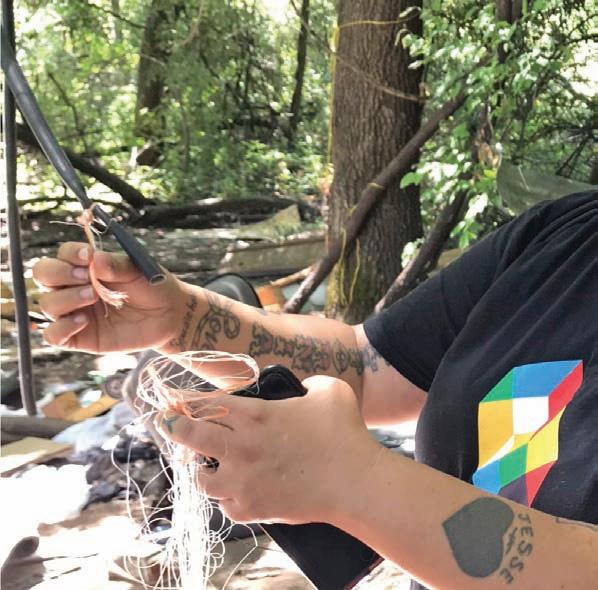
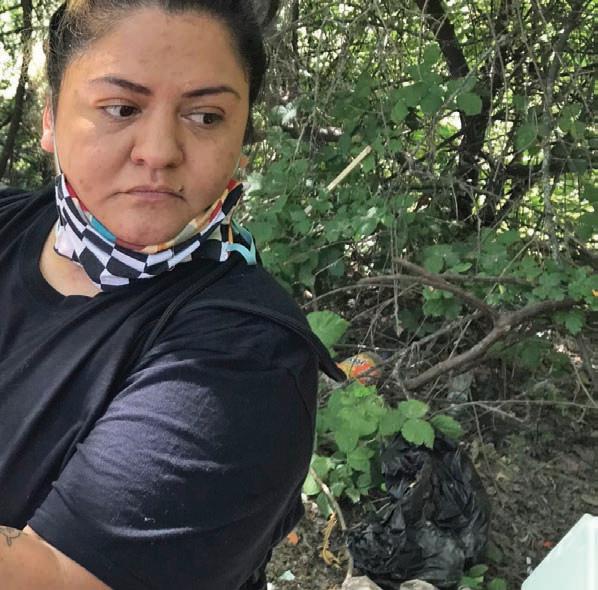
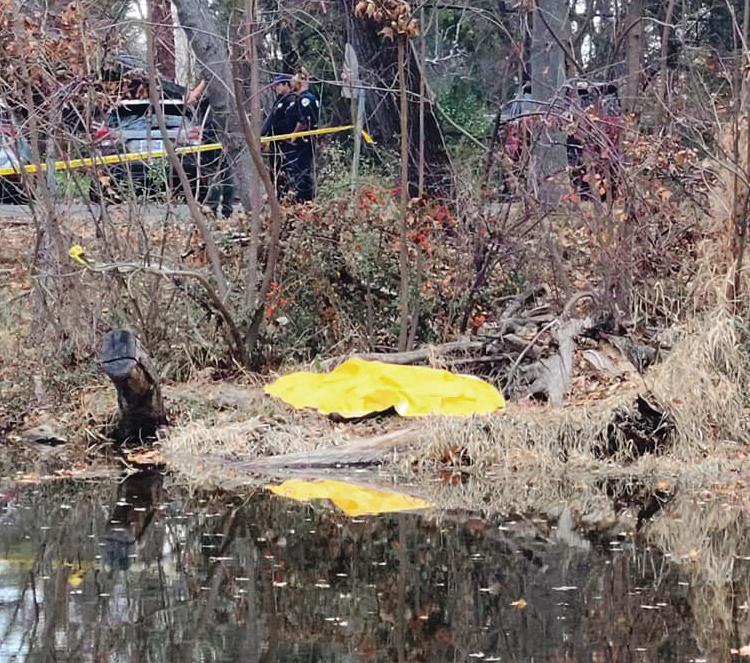
COLD, COLD GROUND
The most recent death in the public right of way—and the first known local homeless death of 2021—was that of Felipe Ramirez Jr., 58, whose body was discovered along the banks of Sycamore Pool at One Mile Recreation Area in Bidwell Park on Jan. 2.
Larry Halstead is a photojournalist and activist who has been documenting homelessness in Chico, including the recent encampment sweeps. He was riding his bike through Lower Bidwell Park that afternoon and noticed police congregating near the northeast corner of the pool, near where a man laid on the shore. Halstead decided to take a bench on the opposite side of the creek and watch what unfolded.
As more officers showed up, it became apparent that the man, later identified as Ramirez, was deceased. Halstead watched as they covered his body—first in a yellow tarp, then in a body bag—packed most of Ramirez’s belongings into a backpack, loaded him into a van and left. Halstead then moved to get a closer look at the creekside spot where Ramirez took his last breath.
“There was some things [the police] left behind … a pair of police gloves, a water bottle, a bag with an unopened loaf of bread in it that had been partially squished,” Halstead said. “Standing in that spot … it just hit me, hardcore. It’s haunted me wondering, ‘Who is this guy? What is his story, and how did it end so tragically here at Sycamore [Pool]?’ I don’t even know what he looked like … maybe I even ran into him.”
Halstead said these lingering questions have led him to redouble his efforts to help the homeless by telling their stories.
“We’re in this war on homelessness here and everybody on the hate side, the ‘Safe Chico’ people, they want to paint all the homeless as being drug addicts and criminals and lowlifes and all that stuff. But every single person out here has mothers and fathers and brothers and sisters, sometimes spouses. A lot have children, and they had jobs and houses and cars they drove. ... When you start talking to homeless people, you find out people have real stories and serious skills.”
Other deaths in public over the past eight months, in addition to Oyler and Ramirez, include Michael “Gator” Gehrke, 36, who died of a drug overdose on Oct. 17 on Oroville Avenue; Carlos Ibarra, 70, who drowned in Sycamore Pool on Oct. 21; Scott Walker, 55, who died of an overdose in his tent at The Triangle on Nov. 16 (nearby campers said he had been sick for several days); and Jared “Truly” Gray, 27, whose autopsy is still pending. Police reported the deaths of two other people in the public right of way: Richard Felix, 42, an overdose victim found along Lindo Channel at Arbutus Avenue on June 21 and Michael McConnell, 51, also of overdose, found in a dumpster enclosure on Cohasset Road on July 4. The CN&R was unable to verify their housing status and they are not included in the count of 18 deaths.
The body of 58-year-old Felipe Ramirez Jr. was found on the side of Sycamore Pool on Jan. 2. The cause of Ramirez’ death is still pending autopsy results.
PHOTO COURTESY OF LARRY D. HALSTEAD, REAL WORLD MEDIA Sonoquie holds the makeshift garrote that killed Wedge. Chico police ruled the death a suicide, but Sonoquie and others have doubts.
PHOTO BY KEN SMITH
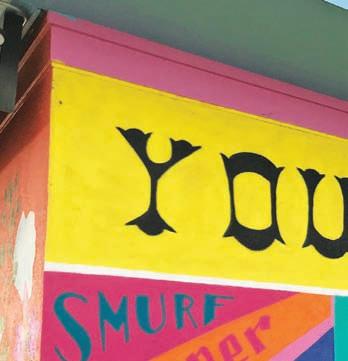

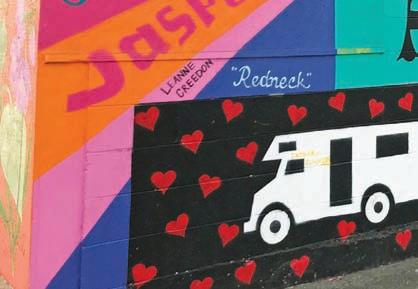

SUSPICIOUS CIRCUMSTANCES
The man found on Cohasset wasn’t the only Fourth of July death among the unhoused. James Wedge was found dead in the camp at Teichert Ponds he’d occupied for several months, with a bundle of fishing line fashioned into a makeshift noose around his neck. The Butte County Coroner’s office determined Wedge died by his own hand, as did Chico police, but many who knew him well have doubts.
“The death of James Wedge was ruled a suicide. We have not received any credible information which would lead us to believe otherwise,” CPD Capt. Billy Aldridge said via email Feb. 2. “We will always invite new witnesses or evidence in these types of cases and will analyze that for the potential of reopening a case. We have heard about the rumors and have invited those spreading the rumors to come forth, but we have yet to hear from anyone.”
Among the doubters is Sonoquie, who spent the days following Wedge’s death scouring his camp for clues and talking to members of the local homeless population who believe he was murdered. She still has the implement of his death—which police discarded on the ground at his camp—and continues tracking whispers of foulplay.
Sonoquie believes the main reason his death was considered suicide was a note found at the scene. However, she believes it was just one of many notes the man—who was diagnosed with schizophrenia and had bouts of paranoia—regularly scribbled. When the CN&R visited Wedge’s camp a few days after his death with Sonoquie and another of his friends, Missy Migdal, similar notes were scattered among Wedge’s belongings.
Migdal met Wedge, who she called “kind and sweet,” several years ago while volunteering at the Jesus Center. Wedge’s “junking” skills were legendary, and she collected several of the items he’d gathered and gifted her into a display she called “James Wedge’s Tiny Museum,” which once stood at the Jesus Center.
“He used to say he was going to start a website called ‘Chico shit dot com,’ then get rich selling people’s junk back to them,” Sonoquie said. “He was one of the most hilarious people I’ve ever met. He was a very intelligent person, so his humor was very smart. He was bright; his IQ must have been through the roof.
“He was also known for freaking out,” she said. “He could just lose it sometimes. He had a really hard life and faced a lot of disappointment. He suffered from a lot of PTSD. He didn’t want to be homeless, so badly. He wanted to be inside, but his monthly income was $432.”
She recalled taking him prospecting—his favorite hobby—in Upper Park for his birthday one year. On her birthday, he insisted on returning the favor.
“We met at the DownLo,” she said. “He had $7 to his name, and he used it to buy two beers and pay for us to play pool.”
To this day, Sonoquie has little doubt Wedge was murdered and has been frustrated by the lack of a more thorough investigation.
“I’m close to a lot of people [on the streets], but James … it was such an unjust situation,” she said. “There was so little acknowledgment, from police, from anyone. It was just another end to a story of a human life that no one seemed to care about. I was so frustrated and saddened by that.”
PAYING TRIBUTE
According to Rebecca Senoglu of the Chico Friends, Oyler’s death has had a profound effect on the congregation: “I feel like it struck us to the heart,” she said. “It compelled us to take even more personally
Safe Space staff operating Project Roomkey assembled an ofrenda for Dia de los Muertos to honor unhoused people who have died. A mural by Sonoquie and Paul Alvarez painted on the side of the 1078 Gallery memorializes many members of Chico’s homeless population who have died in recent years.
PHOTO BY JASON CASSIDY
the plight of people who have no place to live … and no place to die.”
Senoglu said Oyler’s body was found between the time church members met online that Sunday morning and a scheduled business meeting at 12:30. Among the items to be discussed that afternoon was allowing the Chico Housing Action Team to use its fellowship hall—which has sat empty due to the pandemic—to house very ill members of the homeless population. The Friends, who make all decisions as a group, unanimously agreed to the partnership.
Additionally, Senoglu and Bob Runyan, who served as co-clerks for the Chico Friends Meeting when Oyler died, recently penned a letter to the Chico EnterpriseRecord urging the city to do more to help the unhoused. The Friends also put up the temporary memorial to Oyler.
“Every year Chico acts like it’s a surprise that people are dying on the streets,” Senoglu said. “We’re not surprised. We know this is happening because we have not really taken enough action to fix it, and it’s not just going to go away.”
At the end of last summer, Sonoquie was moved to focus her sadness and frustration into a memorial honoring Wedge and others whose lives were complicated by homelessness—and whose deaths went largely unnoticed by the larger population. In early August, she and her partner, Paul Alvarez, painted a mural on the side of the 1078 Gallery featuring names of many who’ve died in recent years.
Several people, homeless and otherwise, showed up to observe the painting of the mural. Among those who hung out and watched was Oyler.
“Eric was always joking around; the first time I ever saw him act serious was while we were painting the mural,” Sonoquie said. “He just sat there, hanging out and listening to music. He kept telling us names we had to put up, then he’d daze off and get quiet and say, ‘There’s just so many.’”
In late December, Sonoquie returned to add 10 more names, all of recently deceased people, to the mural. The painting originally featured a tent in one corner with the word “HOME” on it. Some of Oyler’s friends stopped by and had a special request for where to put his name.
It now reads, “ERIC WENT HOME.” Ω



